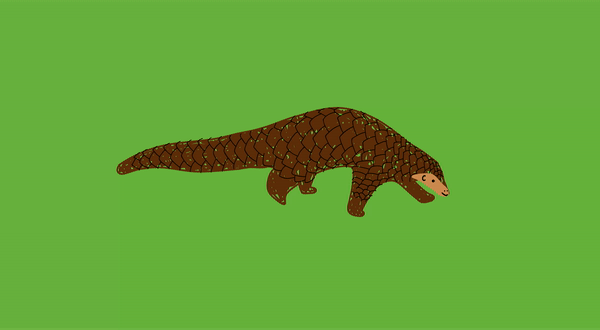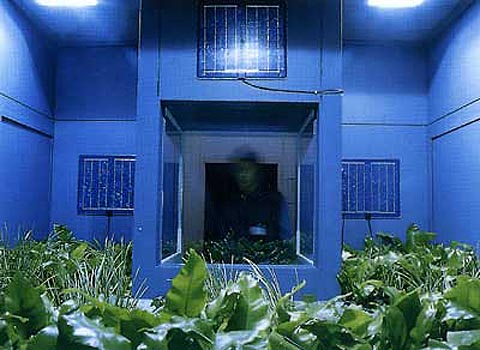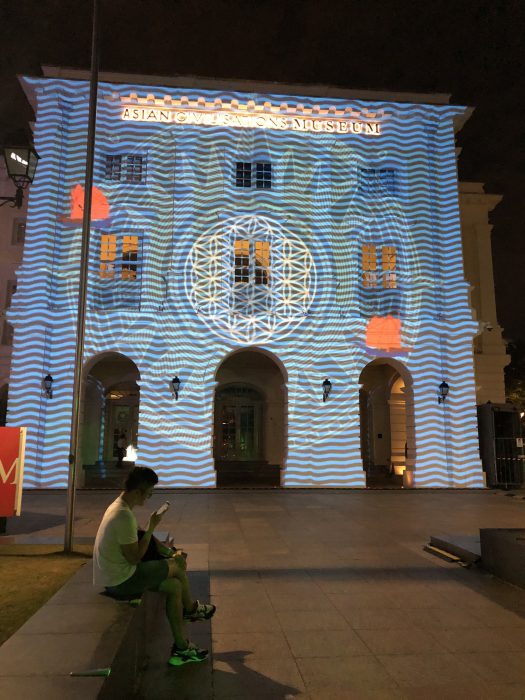
I visited the festival with Mavis, Jinyee, Felix and Clarita after our field trip to the National Gallery!
The Resident
National Gallery Singapore (Supreme Court Wing, facing The Arts House)
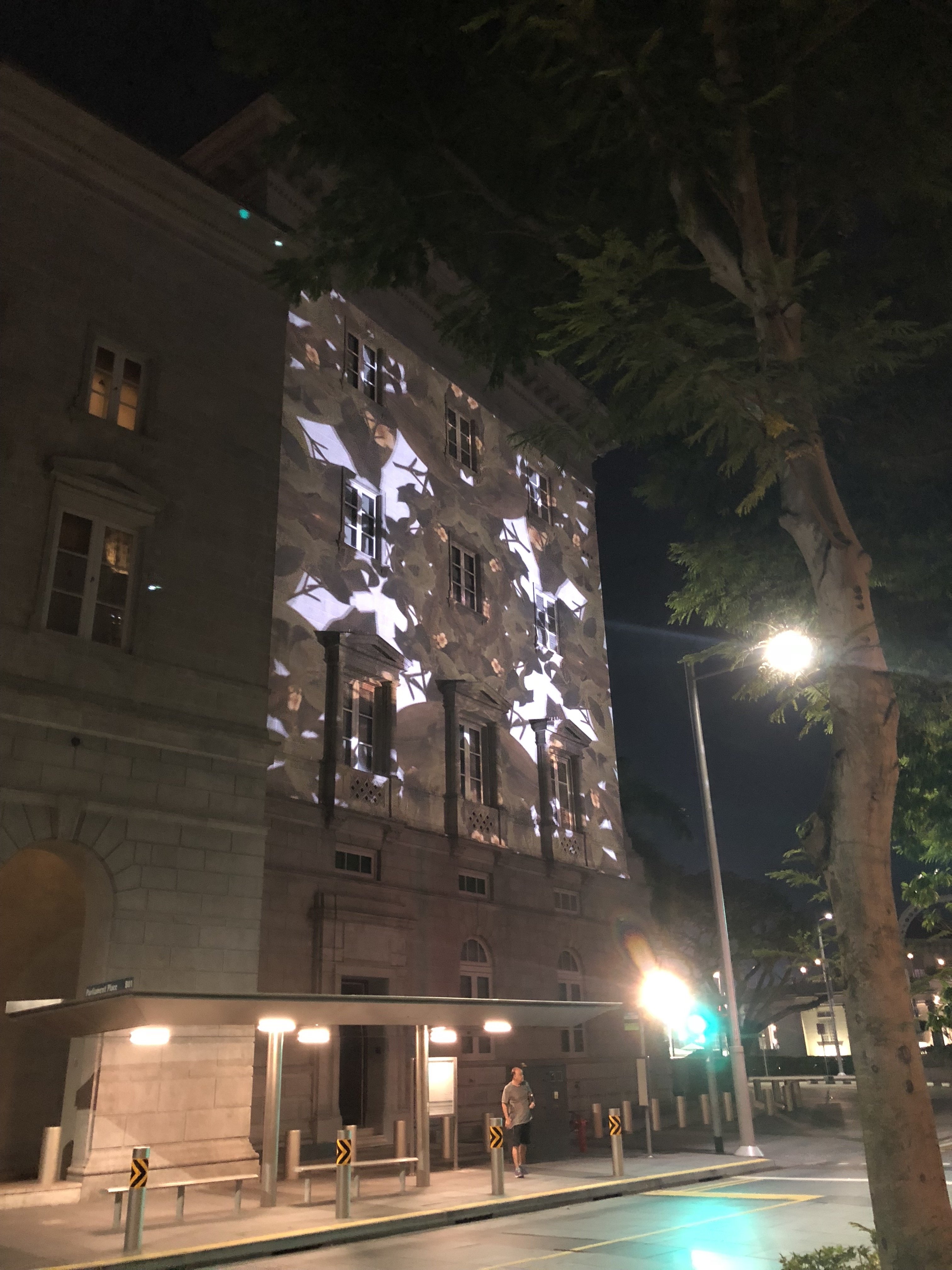
This was the first exhibit in Night to Light that I came across and I almost missed it because it was in such an inconspicuous location! I didn’t see the signboard for this projection hence I didn’t know it was a tribute to William Farquhar (it would have made more sense if I had known because Farquhar was known for his botanical drawings that he often commissioned). But I quite enjoyed it anyway, the symmetrical composition was very pleasing to watch and the plants were very beautiful.
Through Her Eyes
National Gallery Singapore(Supreme Court Wing)

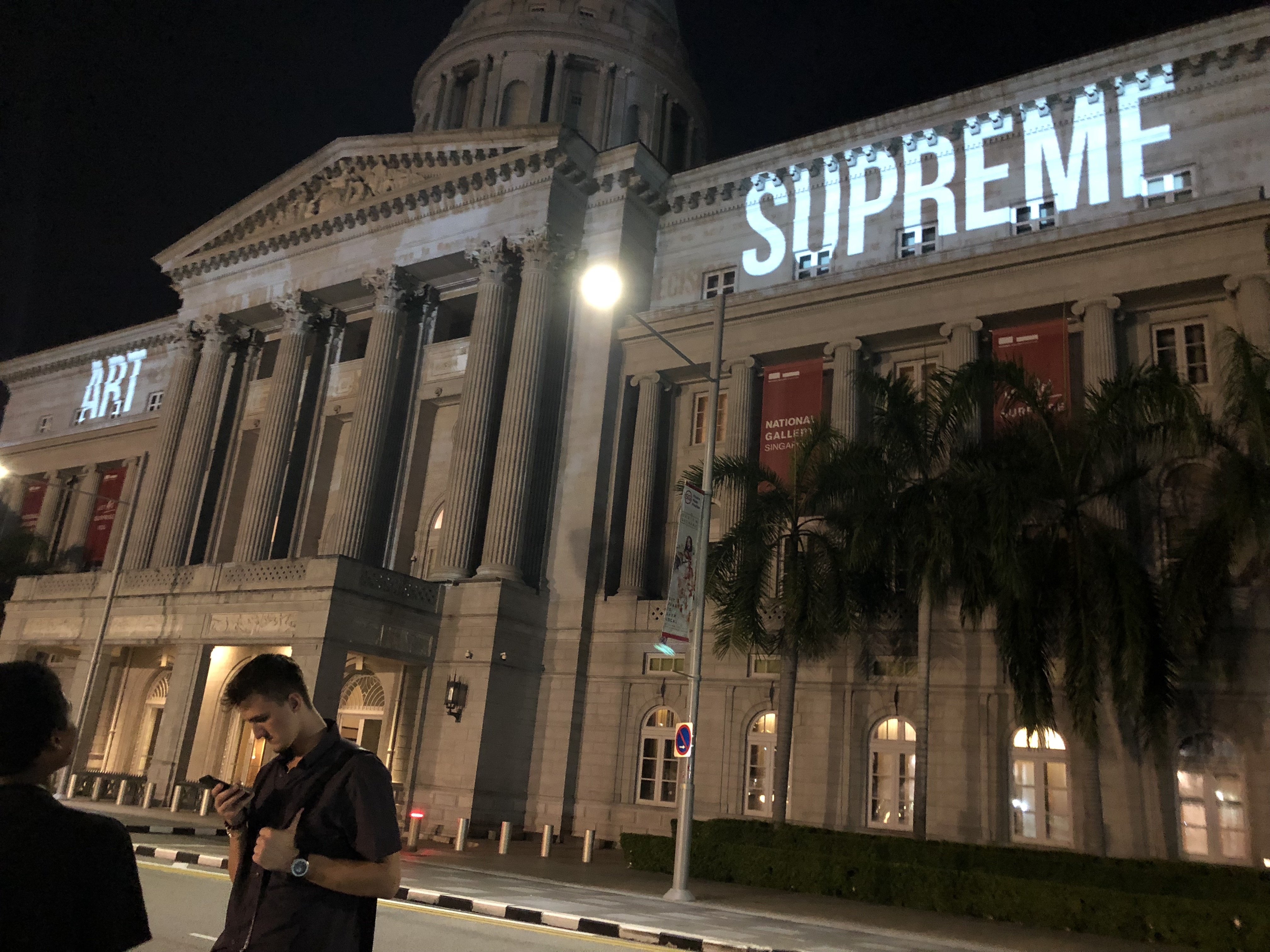
This piece started off as a black-and-white projection with text and the later part of the video was very colourful and vibrant. The 2 parts were extremely contrasting and I was a bit confused at first because I thought they were 2 separate artworks. However, since it’s about the history of the Supreme Court building, perhaps this contrast was intentional to show the contrast between then and now. Personally I liked the later half more because it was more vibrant and more easily visible!
I think due to the light pollution from external sources, the black and white projection wasn’t really visible so I could only see the text and I didn’t know there were supposed to be images until afterwards when I went home and saw the website. A lot of the details of the projection was lost due to interfering light from the sports field opposite.
Secrets of the Sand, Written in the Stars, Snapshots in Time
National Gallery Singapore (City Hall Wing)
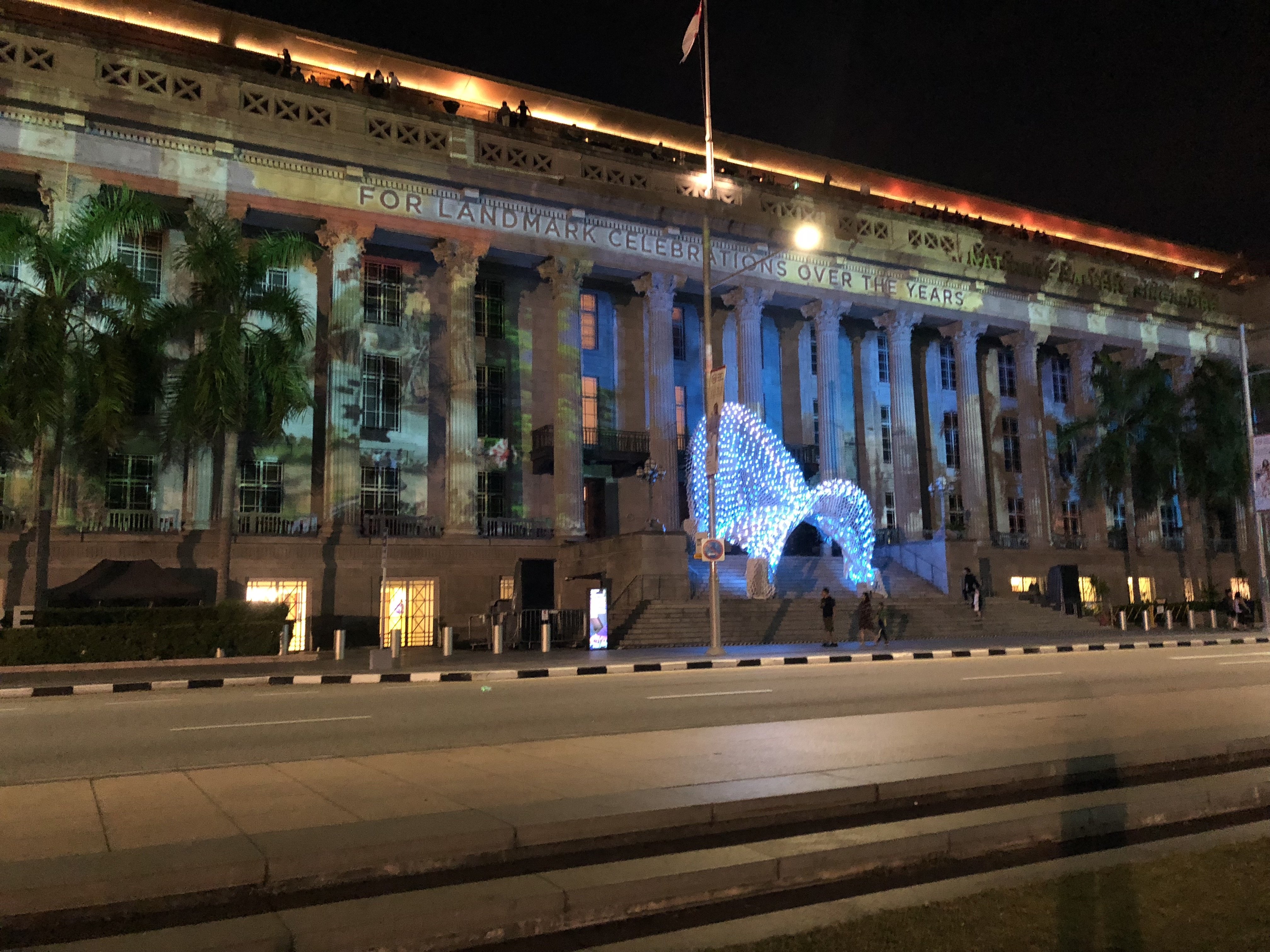
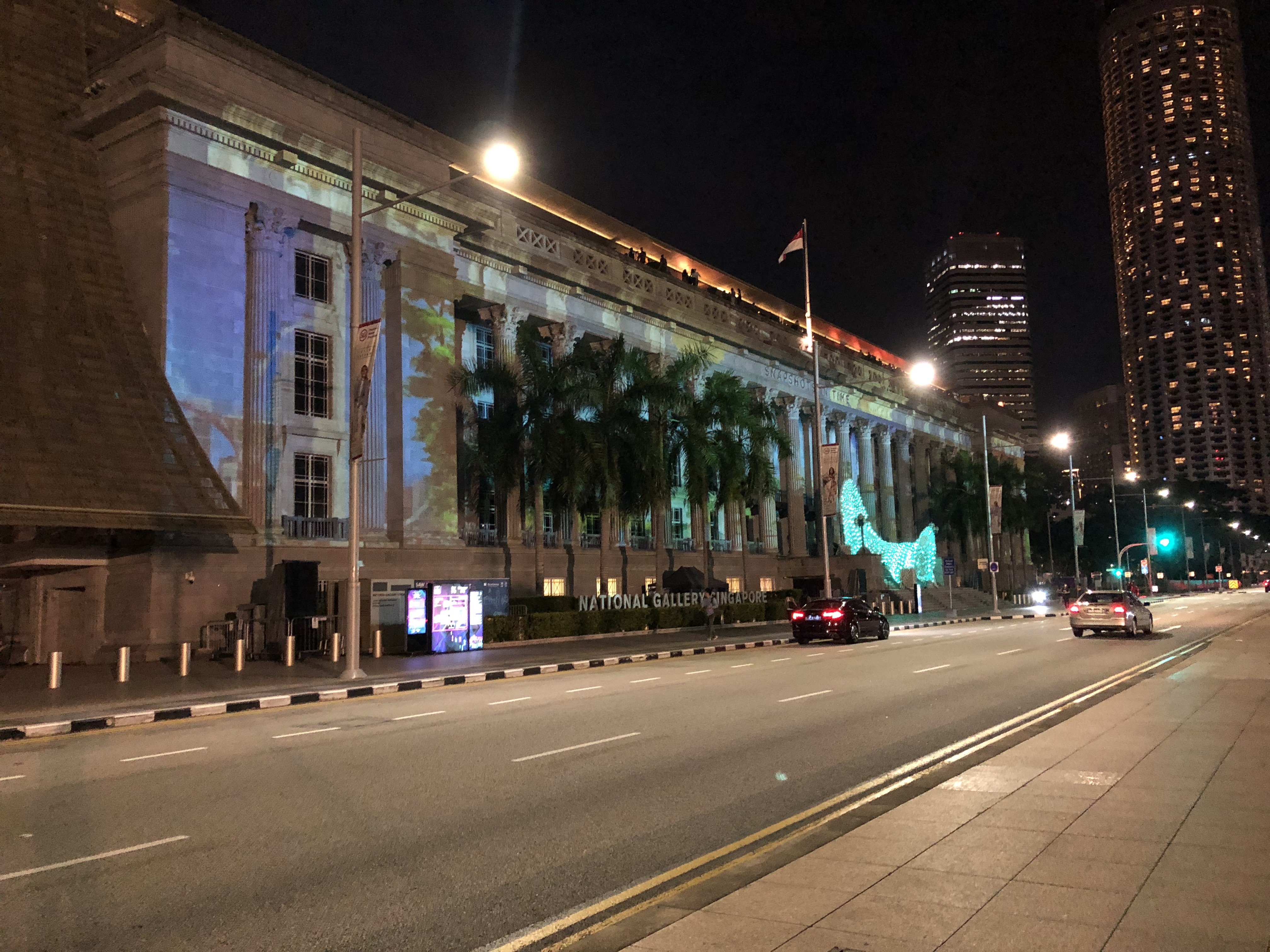
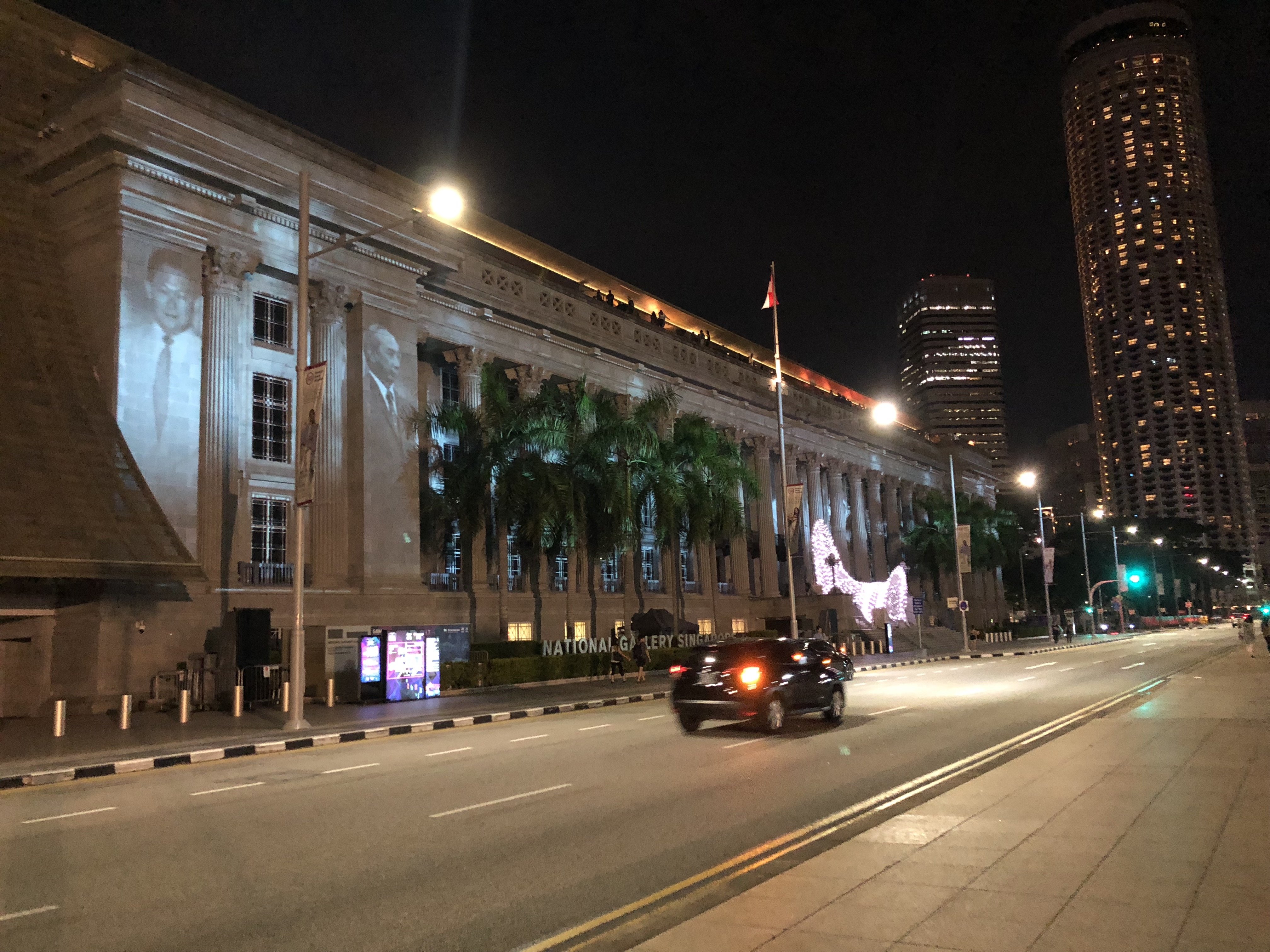
This was situated right next to the previous exhibition (Through her Eyes) and as such, at first I thought the 2 of them were a single artwork and was confused as I tried to view them at once as a singular art piece which didn’t work! Again, this was barely visible due to the interfering light but I managed to gather that it was a story about the history of Singapore from the images that I did manage to see. Some of the details of the video were very intricate and such such very hard to see because they didn’t show up well on the building facade, and also because the projection was so huge and we couldn’t stand far back enough to view the entire thing because there were activities going on in the field behind us. Because of this I felt like I preferred only the front part of the video which was more of a particle-like animation because it was simpler hence much easier on the eyes.
There was also a white structure at the front of the building facade which had colour changing lights that were choreographed to match the sound of the video. To me it was a bit unnecessary as it didn’t really look cohesive to the projection, so it looked like it was more of an afterthought or a separate art piece on its own. I felt the exhibition could have done without it, or it could have been matched with a different projection instead.
Stronghearts: The People of the Singapore River
The Arts House

I really liked this piece because it was well mapped as well as the resolution was good and it was easy to view due to it being in a more intimate quiet location which was darker as well. This was about the history of the Singapore River and the kind of people we would have found along the river in the past, and it was very simple to understand and straightforward.
Open Books
The Arts House
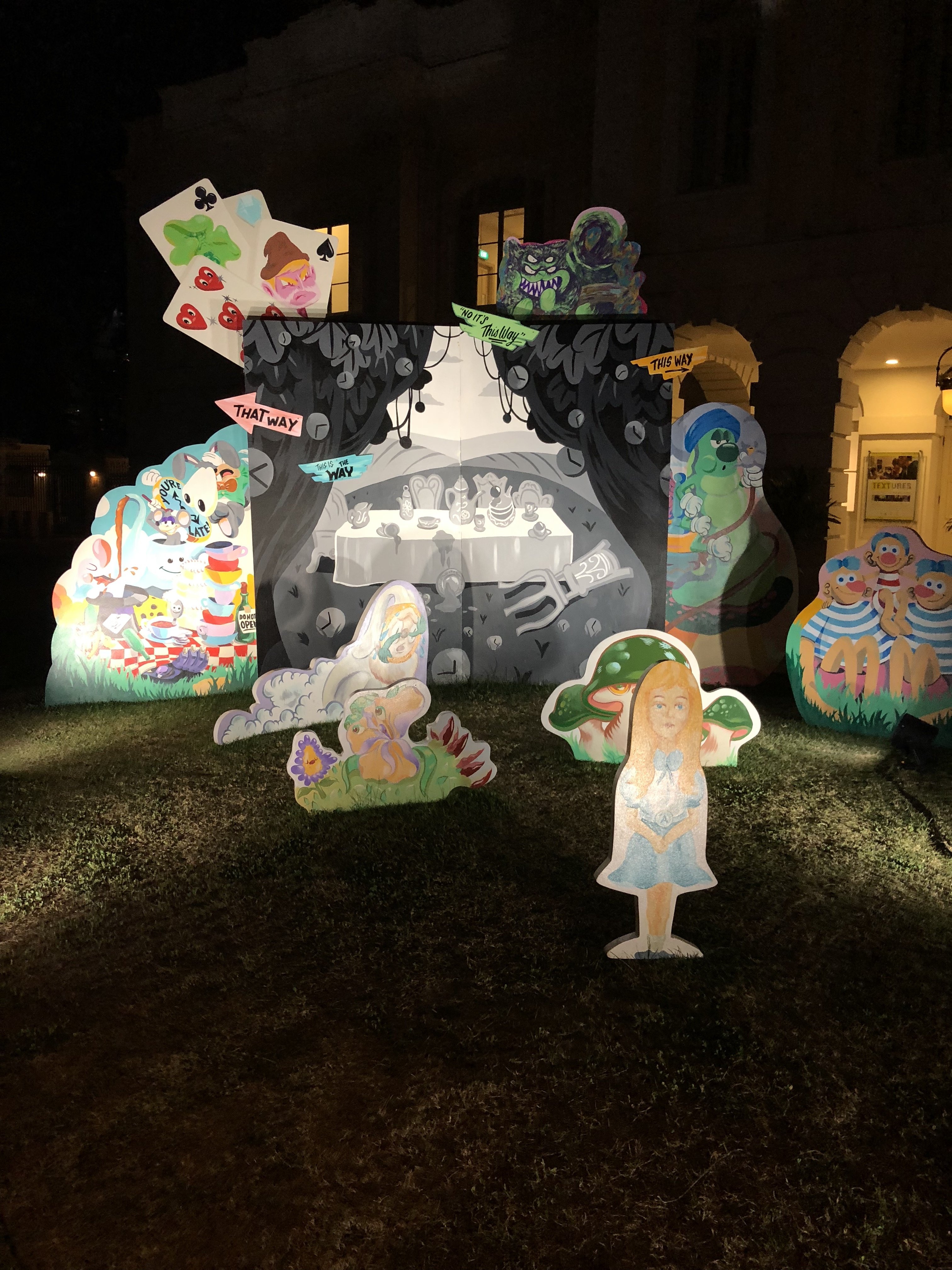
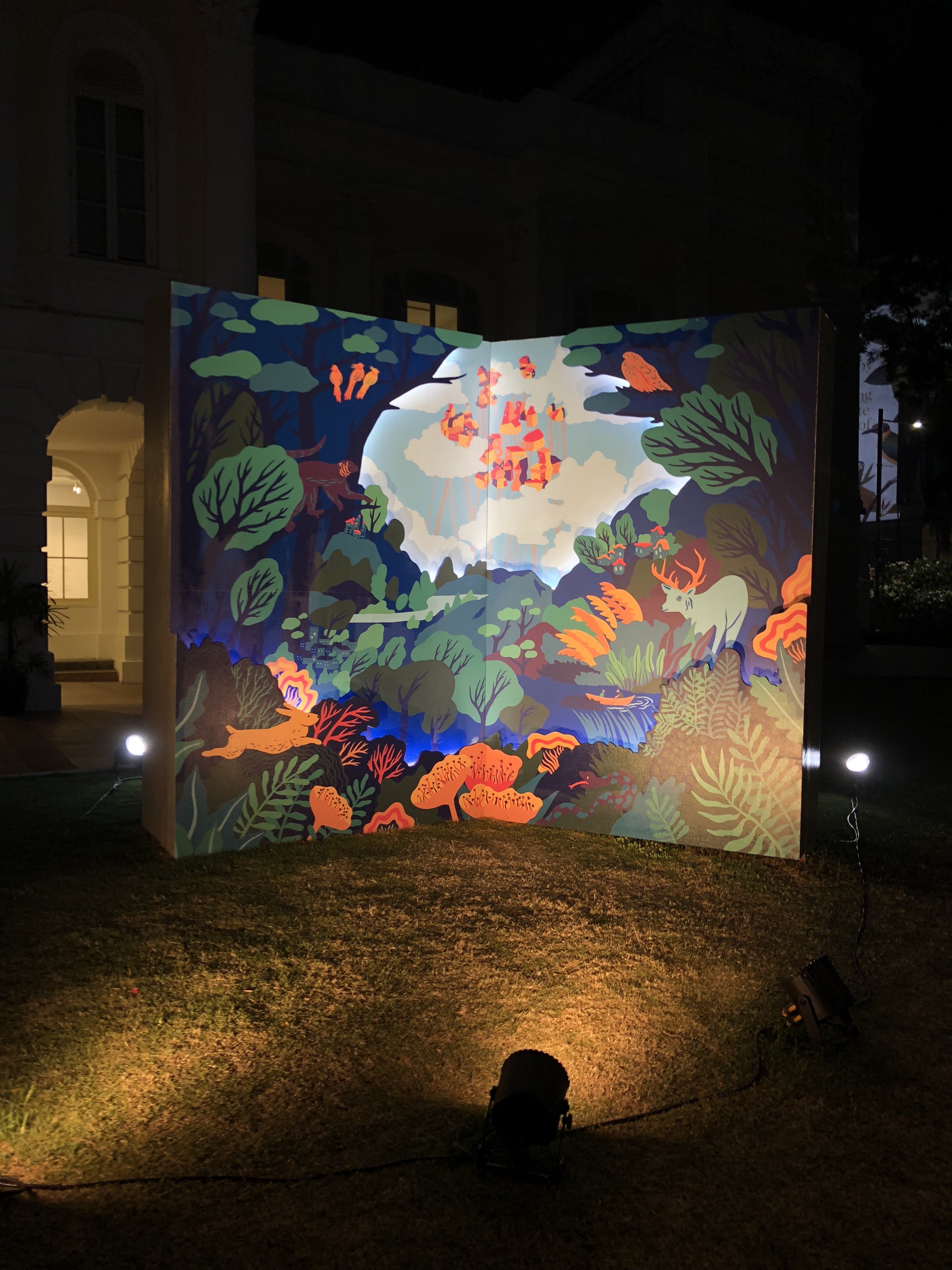
This wasn’t a projection mapping piece but it was nice to see! It consists of illustrated cardboard cut outs by local artist collective Tell Your Children. It added to the vibrancy of the festival and it’s nice to see support for local illustrators!
Portraits of Performers from the Past
Victoria Theatre and Victoria Concert Hall
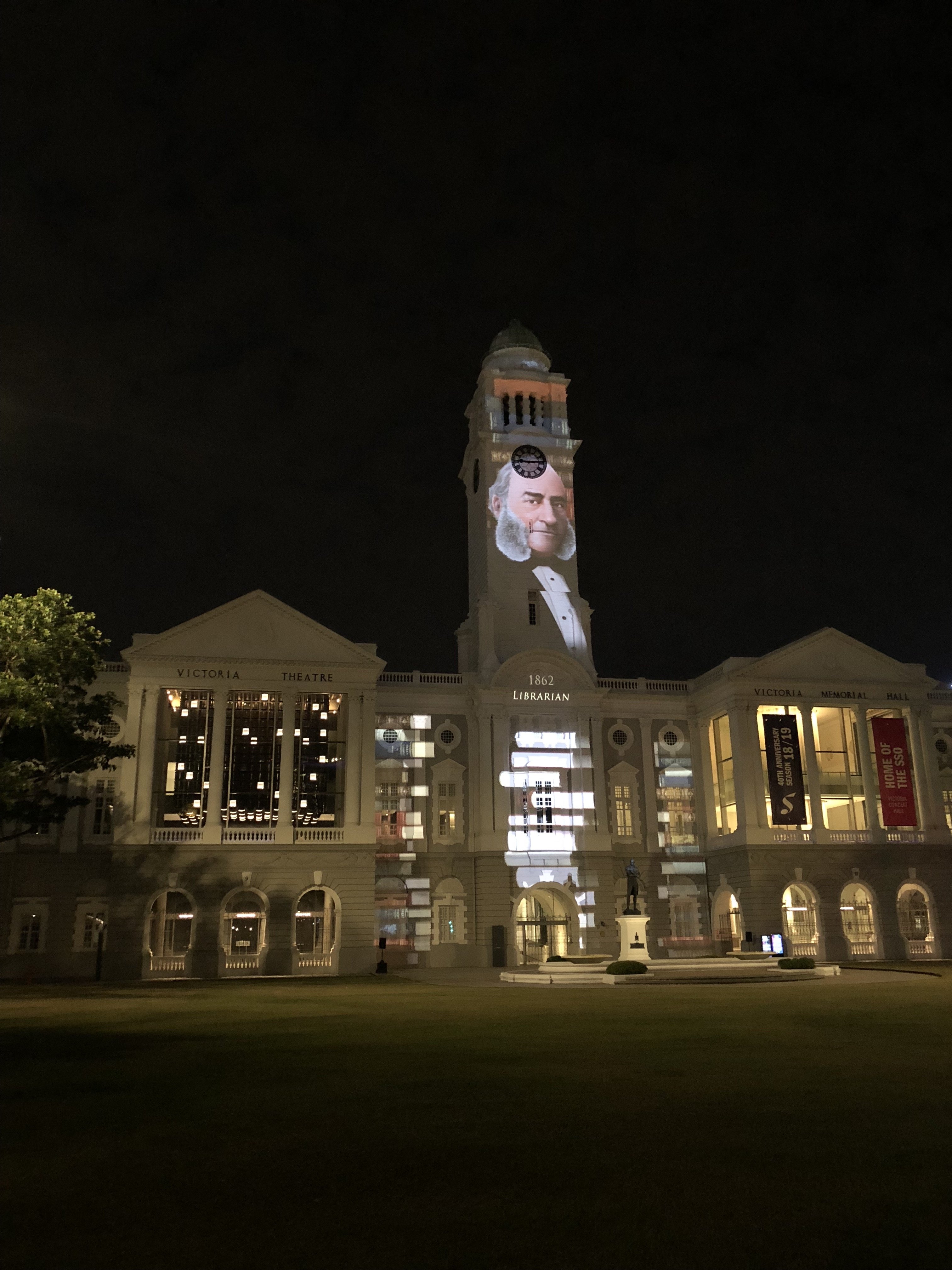
Coming from The Arts House, we very nearly missed this exhibit because it was blocked from our view by some trees. The animation and illustration style reminded me of the hidden object games that I used to play when I was younger!

Hidden object game haha
Sticks
Asian Civilisations Museum
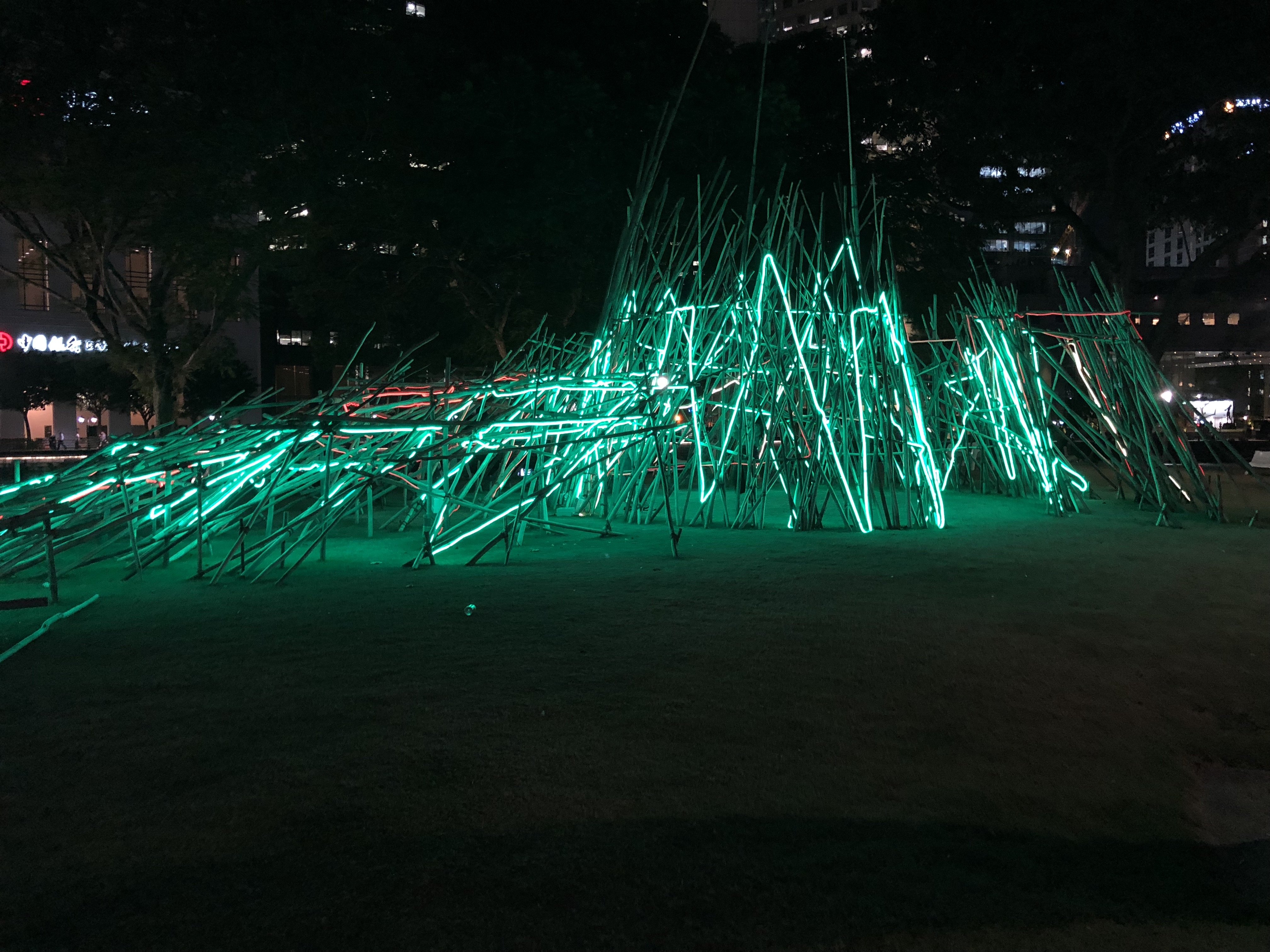
This was one of the only light installations that I saw in this festival, and I initially thought it was part of iLight. The concept behind this is quite interesting, the artist was inspired by pick-up sticks so I thought it was interesting how the lights flash different colours at night as the more modern versions of pick up sticks are made of plastic and comes in different colours whereas the traditional ones are made of plain wood with less colour like the installation. Hence I thought it was quite a fitting contrast to how one would view the artwork in the day and night, in the day without the colourful lights it would more resemble the traditional pick up sticks whereas at night it represents the modern version! But that is my own interpretation and I don’t know if the artist intended that!


Old vs New!
Intersections: The Story of Belonging
Asian Civilisations Museum

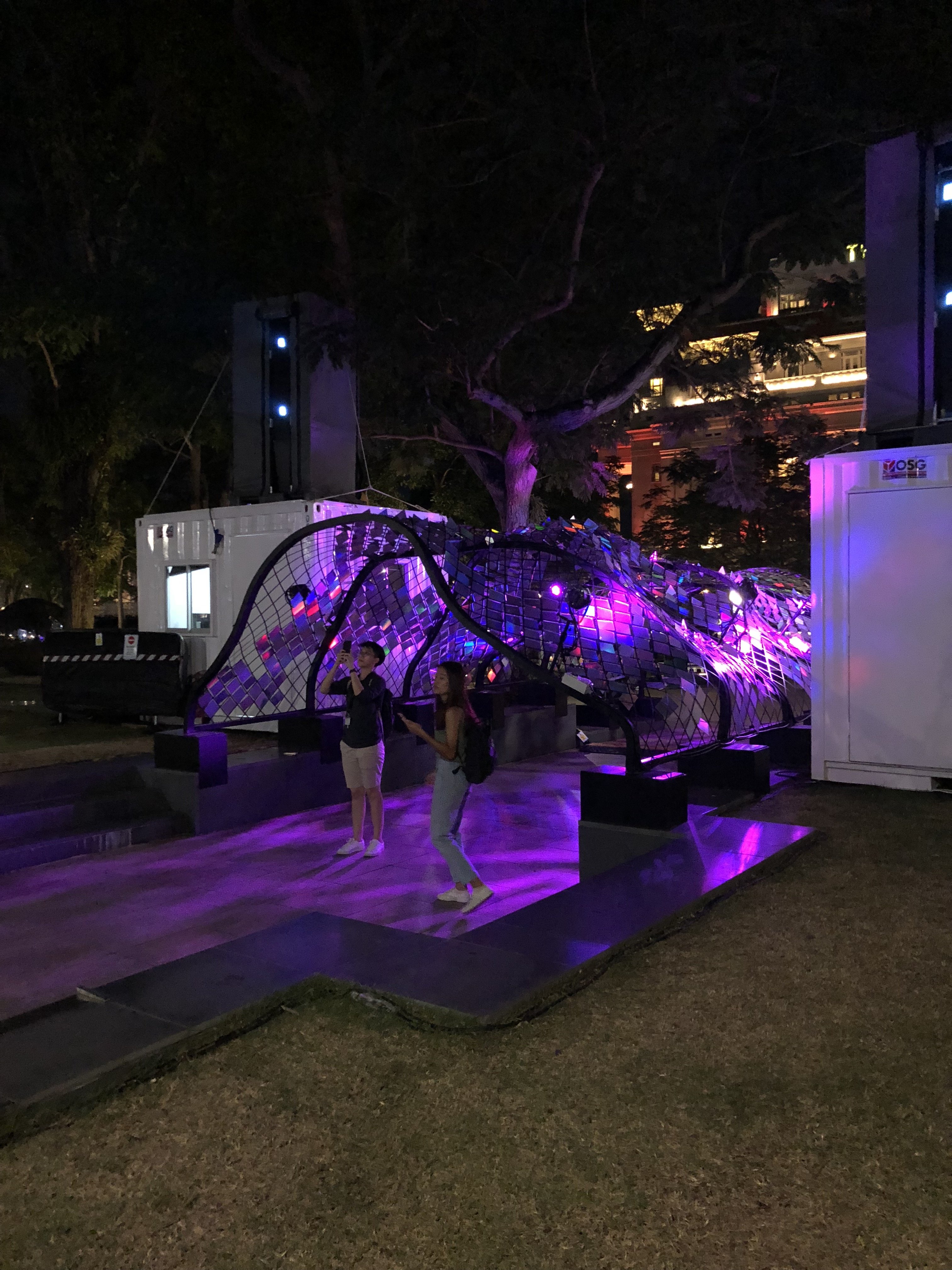
I think this was my favourite projection that I saw in this festival, because of the use of symmetry and vibrant colours. It tells a historical tale of Singapore’s origin story of Sang Nila Utama, in a fun and interesting way! It reminded me a bit of the projection which I saw at Wisma Geylang Serai. In front of it there was a canopy structure with scale-like pieces covered over it, not sure if it was part of this artwork or not but it seemed to be the best place to view the projection from so I assumed it was haha.
Overall Reflection
Overall for me the exhibition design and layout was a bit confusing for a few reasons. Firstly, it was spanning over several locations and some of the artworks were very hard to find as there was no comprehensive map of the whole area that we could access online. Because of this reason, we ended up forgoing all the exhibits at the Esplanade Park area as we couldn’t find them despite walking around the entire park!
Secondly, this festival was held in conjunction with iLight festival, and some of the areas were shared between both festivals hence we couldn’t tell if it was part of iLight or part of Light to Night festival. However Mavis pointed out that to a regular person who just wants to view some art at the civic district, it wouldn’t really matter to them to check which festival it is from as to them they are just viewing another artwork. It does make wayfinding quite hard though if someone is trying to view artworks in both festivals at once!
Thirdly, the placement of the signboards in this festival kind of bothered me. Because this festival was heavily based on projection mapping, I felt like they had to take into account that projection mapping is best viewed from a distance. Hence I felt that the signboards should have been placed at a fair distance from the building facade instead of directly in front of it, because the sign board acts as a placemarker to people that they should stand there to view the artwork. Furthermore some of the artworks like the ones on the National Gallery facade were not very friendly to be viewed from a distance due to events or structures that were in front of it hence maybe they could have done a smaller scale projection or chosen a different facade to project the video on.
I feel that when it comes to projection mapping, it is important to take into account the facade that it is being projected on and treat it was part of the artwork instead of just using it as a surface for projection for the sake of it. For some of the art works especially the ones at the National Gallery I feel there was a lack of consideration for the surrounding factors, such as the amount of detail in the building which disturbed the coherency of the video as well as interfering lights.
Nevertheless I did enjoy the festival overall and felt that some of the pieces were really good! It made me really happy to see that with Light to Night and iLight going on consecutively, the Singaporean art scene is really invigorated and exciting. I mentioned to my friend that if a tourist were to happen to visit Singapore at this very moment in time, they would be very lucky as they would have come at a period where there was a lot to see and do. I’m proud to be a Singaporean artist and can’t wait to start creating my own art to contribute to this vibrant scene (:















